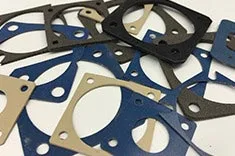EMI Shielding Products
- Custom Gasket Fabrication
- Connector Gaskets
- Bonded O Ring
- Custom Gaskets
- Conduct-O-Knit Knitted Wire Mesh
- Conduct-O-Seal Combo Gasket
- Conduct-O-Elastomer
- Conduct-O-Seal Oriented Wire in Silicone Gasket Material
- Conduct-O-Mesh Tape
- Conduct-O-Foam
- Conduct-O-Bond
- Optical Filters For Electronic Displays
- Shielded Vent Panels
- 300 Series
RF Shielding: Understanding Its Importance in Modern Electronics

Radio Frequency (RF) shielding is a critical technology in modern electronics, offering indispensable protection against unwanted electromagnetic interference. Its applications are broad, ranging from securing sensitive data to ensuring the accuracy of medical and scientific equipment. RF shields are essential for modern electronics.
Harnessing the Power of Faraday Cages: Wire Mesh and Screens
The Faraday cage represents the earliest and one of the most effective RF shielding techniques. Formed by a continuous, conductive enclosure, this RF shield effectively neutralizes both static and dynamic electromagnetic fields. The secret to its efficacy lies in its principle of operation: it redistributes electric charges across its exterior, creating a secondary electric field that cancels out the primary one. The result? A net electric field of zero within the cage.
Interplay of Electric Fields in a Faraday Cage
In a magnetic field scenario, a Faraday cage also mitigates incoming magnetic fields. By creating eddy currents that generate a counteracting magnetic field, the interior of the Faraday cage manifests a substantially reduced net magnetic field.
Wrestling with Magnetic Fields in a Faraday Cage
Despite being highly effective at attenuating low-frequency waves, Faraday cages are less reliable against high-frequency waves, such as HF RFID, due to their ability to breach the shielding. To mitigate this, the cage's apertures should be kept to less than 1/10 of the wavelength of the electromagnetic wave targeted for blockage.
The Impenetrable Fortress: Solid Enclosures
Solid enclosures offer a more robust form of RF shielding. Constructed from continuous metal with limited openings, they offer superior defense against a broader spectrum of electromagnetic waves. Despite their superior shielding properties, their solid construction restricts airflow, necessitating grounding to dissipate stray currents and prevent electric shocks.
Securing the Access Points: Gaskets and O-rings
To maintain the shielding efficacy of Faraday cages and solid enclosures, addressing the potential discontinuity at access points, like doors and lids, is crucial. RF gaskets and O-rings provide the perfect solution by creating a seamless enclosure. Constructed from resilient elastomers or metal fillers, they offer the necessary strength and adaptability to ensure a perfect fit.
Protecting the Life-Lines: Cable Shielding
Instruments and power cables often utilize cable shielding to prevent electromagnetic interference. With a design that runs parallel to the insulating layer of the conductor, it guards the cable's signals and blocks any outbound electromagnetic waves. Cable shielding comes in three distinct forms:
- Foil Shields: Made from aluminum, copper, or other conductive materials, they're adept at blocking frequencies above 15 kHz, although they risk damage under excessive strain.
- Spiral Shields: Copper strands wrapped around the insulator of the conductor form a spiral shield, which is cost-effective and easy to install, though prone to discontinuities when the cable is mishandled.
- Braided Shields: Composed of woven wires, these shields are strong, flexible, and ideal for crimping or soldering, making them ideal for blocking low-frequency waves.
Balancing Ventilation and Shielding: Shielded Vents
Shielded vents or honeycomb vent panels balance the need for airflow with the shielding integrity of the enclosure. They ensure that the electronic components inside solid enclosures remain cool without sacrificing their protection against electromagnetic interference.
Securing Component-Level Integrity: Board-Level Shielding
Board-level shielding prevents electromagnetic signals from disrupting or exiting the board-level components. Available in one-piece or two-piece designs, they incorporate RF seals and fittings for optimal protection.
Implementing Large-Scale Protection: RF-Shielded Facilities
In high-stakes environments like healthcare, IT, military, and government sectors, complete RF-shielded facilities provide a comprehensive solution. These facilities, often built using conductive sheets covering all surfaces, offer a secure environment for sensitive operations. A prime example is the MRI room in healthcare facilities, which must be shielded to ensure accurate imaging and prevent interference with other medical equipment.
Overall, the field of RF shields is expansive, with each form offering unique strengths and considerations. Understanding these nuances is critical in developing effective RF shielding strategies that align with specific applications and environmental constraints.



